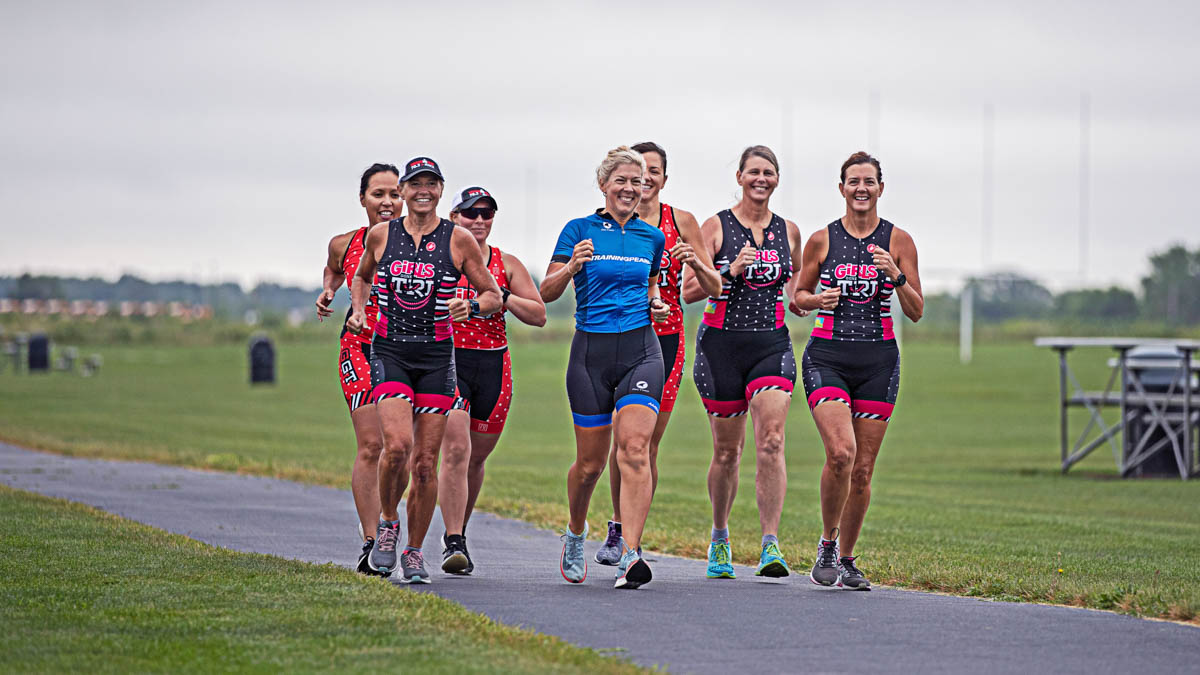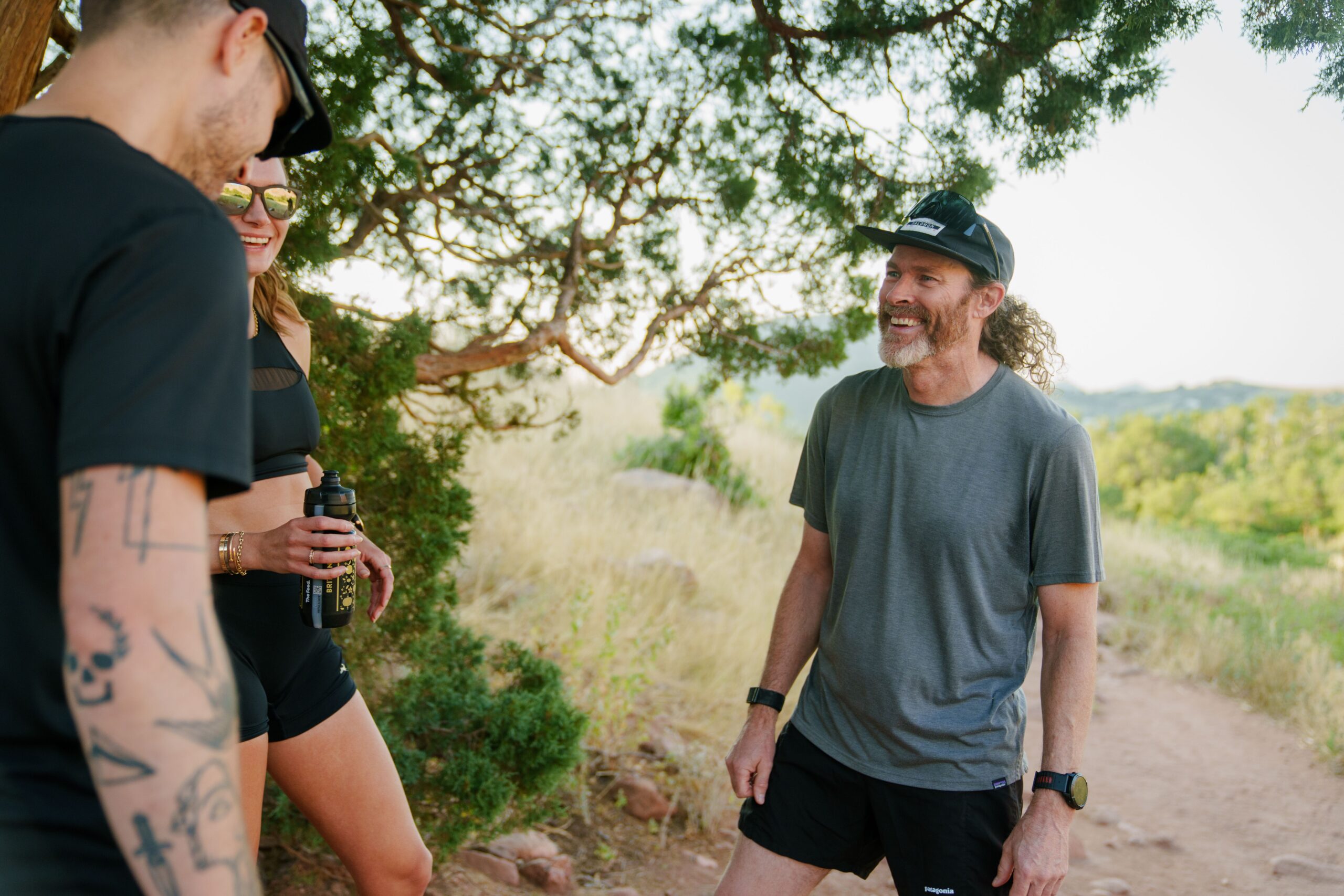If you’re primarily coaching swimmers and triathletes, you might want to expand your client base by attracting more runners. Or maybe you already have a core running group and want to grow it. But in an increasingly crowded coaching marketplace, it can be hard to bring in new clients. This article provides examples of how an independent coaching business and a running club have cracked the code by offering services that help them stand out and meet runners’ specific training needs.
Targeting Time Goals
As a coach, it can be helpful to get out of your head to see beyond what you think clients need. Putting your fingers on the pulse of the running community and asking your current clients lots of questions can enable you to create targeted programs that meet needs the rest of the market has ignored. When I called up Mary Johnson, founder of Lift | Run | Perform (LRP), she shared that this client-centric perspective prompted a fellow coach to suggest launching a Project: Breaking 3 training group.
“You start to develop a coaching sweet spot after a while, and for me, that’s women who are between 2:50 and 3:20 for the marathon,” Johnson said. “Breaking 3 offers them dedicated coaching, nutrition guidance on things like iron levels and race day nutrition from Meghann Featherstun and free supplements and gear from our sponsors. The results have been amazing. When you join a group like this, you become like sisters, want to show up for everyone else, and get to the finish line for the good of the team. It’s less about you and more about the person running next to you.”
Creating Referral-Worthy Experiences
While the initial hook for a group like Breaking 3 is aspirational for women who want to run sub-three-hour marathons, Johnson makes sure she documents their progress and then closes the loop by hiring a photographer to record the memorable scenes when runners cross the line to achieve their goals.
“When I hire a photographer, I tell them that I want to capture videos and images that make people like me think, ‘I want to be part of this team next year,'” Johnson said. “Some new members have been watching this group’s journey for three years, from when these women were running 3:15 or 3:20 to the moment when they finally broke three hours. That’s the kind of person I want to join us. It also helps when our athletes are sharing their own perspectives and saying how they were life-changing.”
By sharing Project: Breaking 3’s successes on social feeds celebrates all the hard work her runners have put in and attracts some new clients. Yet Johnson is quick to point out that many of these first started following her because of word-of-mouth. She doesn’t have to market Breaking 3 and her other training groups very much anymore because most signups come from existing clients and referrals.
“The goal of any fitness professional should be high retention,” she said. “That only comes when you make establishing credibility and developing strong, lasting relationships your number one priority. Once you do that, the results speak for themselves. It can’t be all about PRs, even though we’ve had a lot of those. Maintaining the human element of coaching is really important to me. Make connections show that you care about people and don’t burn them out. If you’re providing value to a client that continues to prove itself year over year, they don’t need anyone but you, and will tell their friends and family about what you’re doing together.”
Supporting Race-Specific Aims
Breaking 3 is only one of the team training opportunities Johnson and her fellow coaches offer alongside her one-on-one coaching services. They have also provided programs for women wanting to break four hours and those trying to go below 90 minutes for a prospective Boston Marathon qualifier. Over time, these offerings have expanded to include major marathons across the U.S. Time-focused and race-centric groups have helped LRP attract new running clients.
“Some of our other popular training groups aren’t time-based but are built around a group of women coming together to prepare for a certain marathon, like Los Angles, Boston or New York,” Johnson said. “People want to get to know others who are targeting the same race, meet up with them at the event without it feeling overwhelming, and pursue their goals as part of a team.”
An additional benefit of creating a tailored running program with a high degree of personalized attention is that it’s a career development opportunity. “One of the reasons Breaking 3 is a passion project for me and a great learning experience is because it involves so much coaching – it’s not just writing a program,” Johnson said.
Embracing Club Coaching
Another way to grow your running client base is to do so within a club structure. This isn’t to say that you can’t offer independent services at all, but rather that you could simultaneously leverage an established organization’s reach, reputation and support. To find out how to do so, I contacted Kevin McGirl, founder of Rundamentalists and coordinator of the marathon training group at Evanston Running Club in Illinois.
McGirl believes that one of the most significant benefits of coaching runners within a club structure is that it taps you into an entire community network. While online and social media marketing has a place, it’s no substitute for establishing roots in your local area and collaborating with like-minded people to offer runners more than just coaching.
“We work closely with independent running stores – they offer member discounts, and we promote them in return,” McGirl said. “From the Chicago Marathon to smaller races, we also try to go to as many local events as possible. A lot of our new members come from people who stop by our tent for a cookie and a chat after a race and crave being in a group environment instead of going it alone. We also have a network of local PTs, osteopaths, podiatrists, and other practitioners whose services we recommend and vice versa. They come to our events and are engaged with our runners.”
Retaining New Clients and Differentiating Your Services
Another pointer McGirl offered related to the importance of differentiation. “It’s very nebulous to just call yourself a running coach, particularly given how crowded the market is,” he said. “You’re probably better off targeting certain distances, like 5K, 10K, half or full marathons, specializing at different experience levels, or catering to certain demographics like masters or juniors.”
McGirl went on to suggest drawing a Venn diagram in which you could visually map out the variables that contribute to choosing a sweet spot for your niche. For example, a coach at his club might start generically with runners, then progress to marathoners, the Chicago area, Evanston, and individuals who need the community that a club provides. You could layer in greater nuance, such as offering bespoke training options for Boston Marathon qualifiers or, like Johnson, those targeting a particular time goal.
One of the benefits of developing this kind of focus is that it makes it easier to create a distinctive brand and market your coaching around it, McGirl believes. “Runners want to know what differentiates you, how well you understand their goals, fears and challenges, and why you might be a good fit,” he said. “This is how you start to demonstrate value.”
Attracting new runners through such a strong local network is merely the first step in building up your coaching business. To minimize churn and increase retention, you must get new clients through their honeymoon period by creating positive experiences. Within a club setup, coaches lead group sessions but don’t have to do all the heavy lifting because they have veteran members to welcome and offer support to newbies.
“It’s very easy to scare new runners off,” McGirl said. “That’s why we pair them with a more experienced member and make sure we’re putting them in the right training group from the beginning. There’s a social opportunity after every training run, and it’s great to see veteran runners sharing their experiences and answering questions. Feeling like they’re connected, and part of a community is what makes people want to stay.”
Demonstrating Initial and Ongoing Value
Another consideration when it comes to creating a viable value proposition is finding a suitably committed niche market and providing a missing piece of their performance puzzle. “If someone is buying shoes, gear, and supplements to train for a race and then paying for travel and accommodation, they’re already bought in,” McGirl said. “You need to show how what you’re offering can deliver a return on this investment and tie all the other elements together.” This is the approach McGirl used when creating a new mental coaching group program for marathoners, which he equated to the cost of a pair of training shoes.
As an entrepreneur who’s focused on coaching, it’s easy to start feeling frustrated or isolated, particularly when you’re struggling to find new clients. McGirl believes that the antidote is deliberately setting aside time to regularly meet new people, develop existing relationships, and broaden your network of in-person connections through a running club setup and racing scene.
“You’ve got to go where runners are and become part of the local conversation,” McGirl said. “Then if you offer good experiences, make people feel like they’re part of something, and continue meeting their needs with new and improved services, you’re likely to keep your existing clients and gain more through referrals.”










